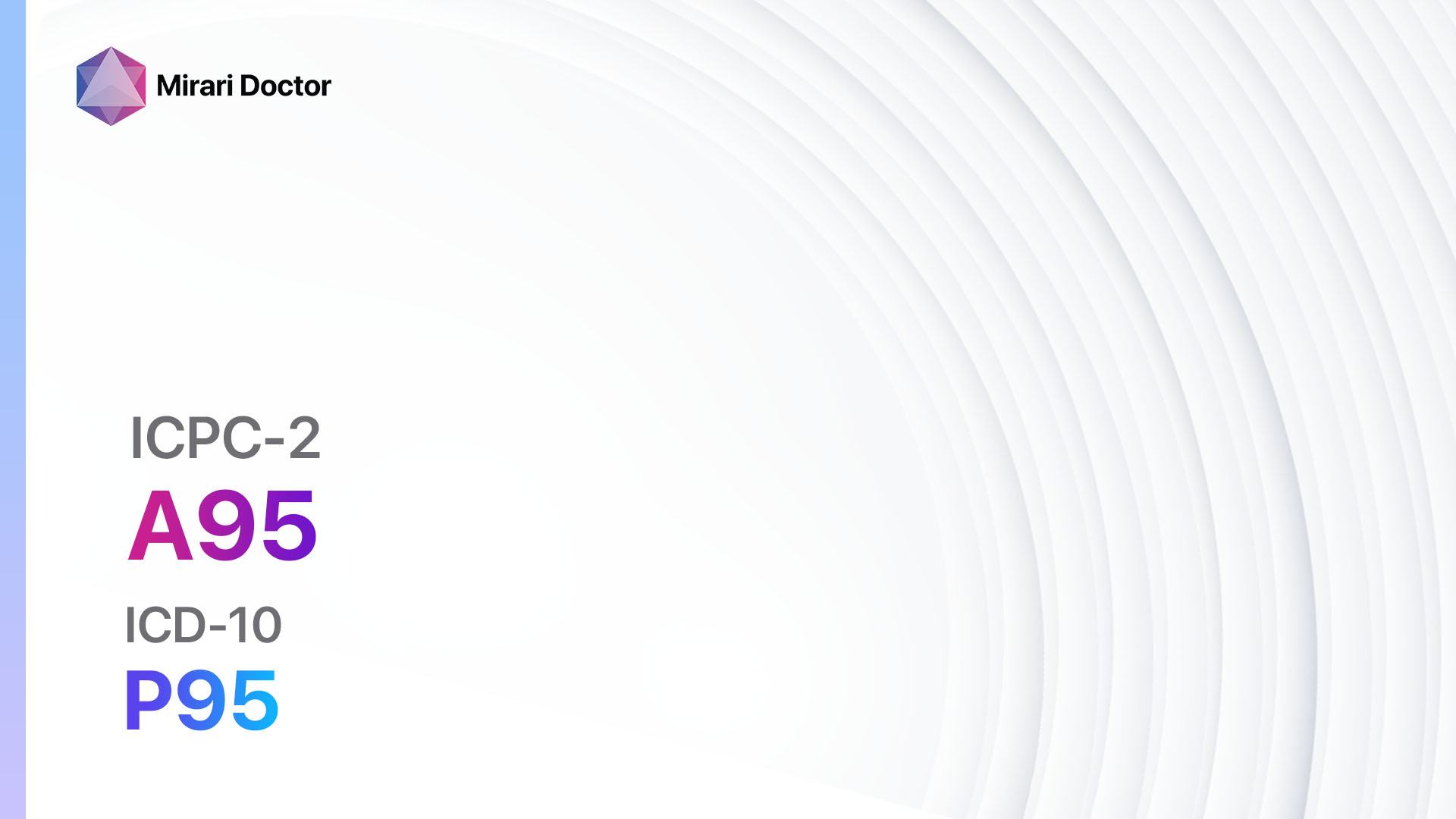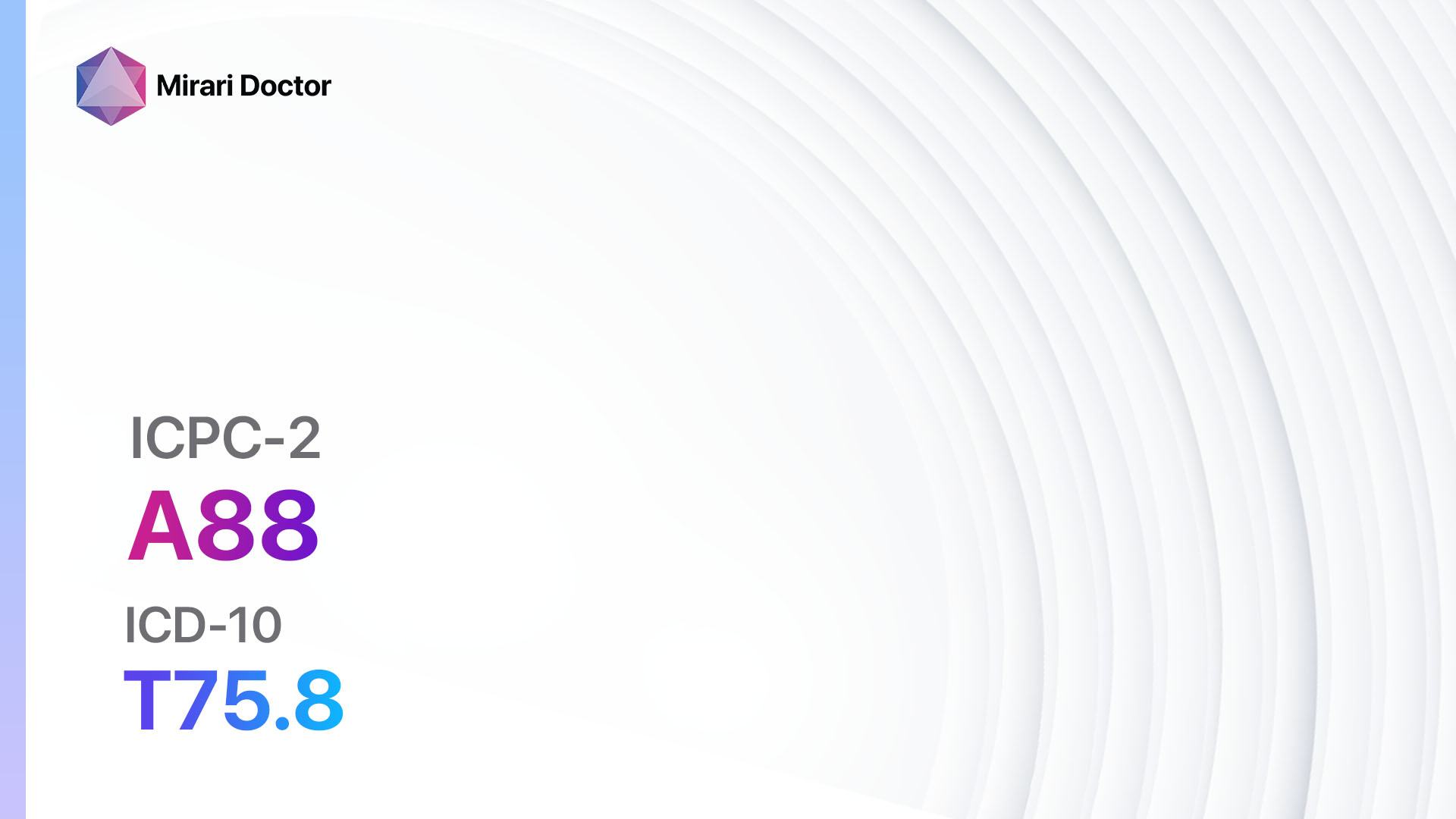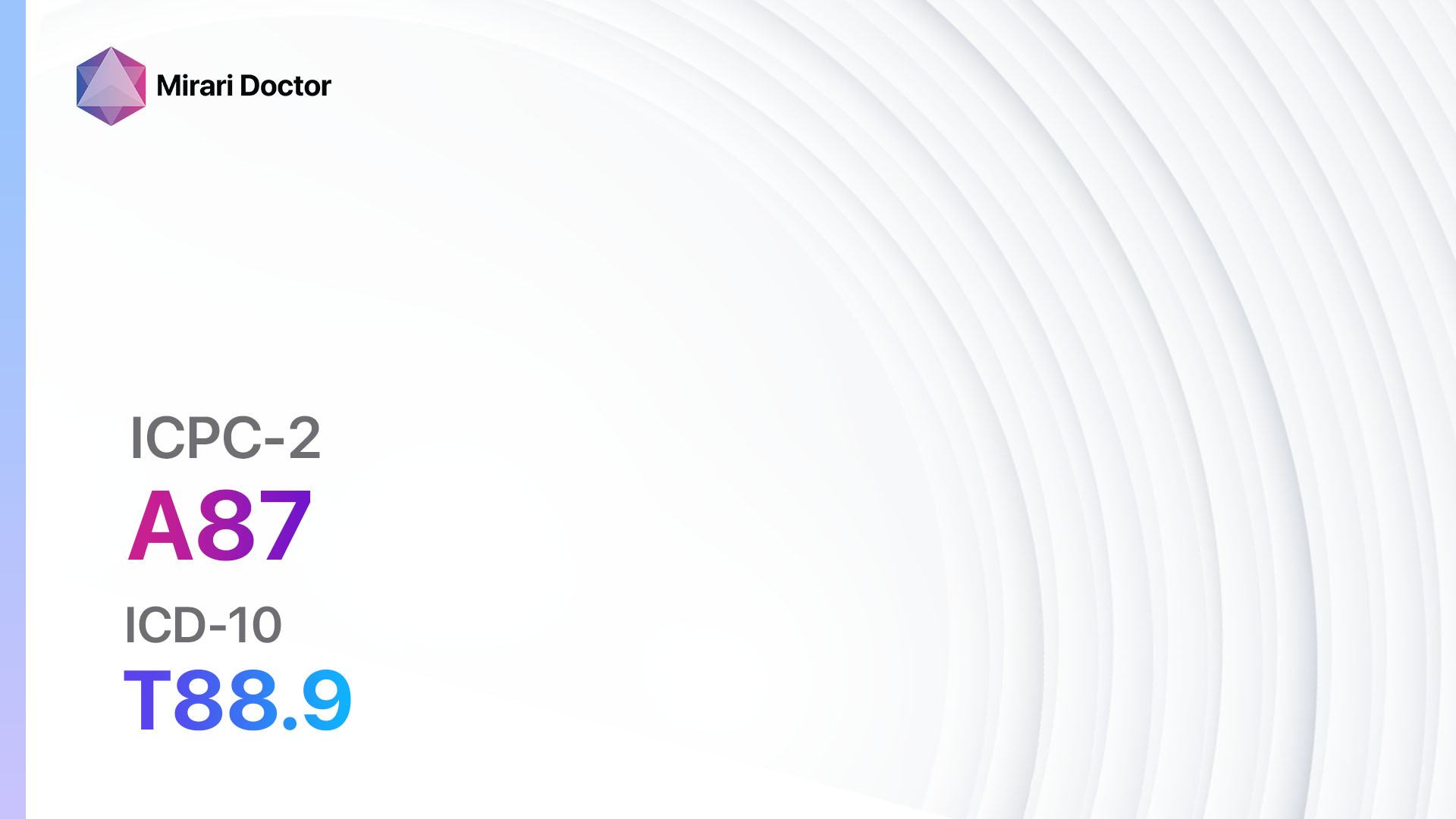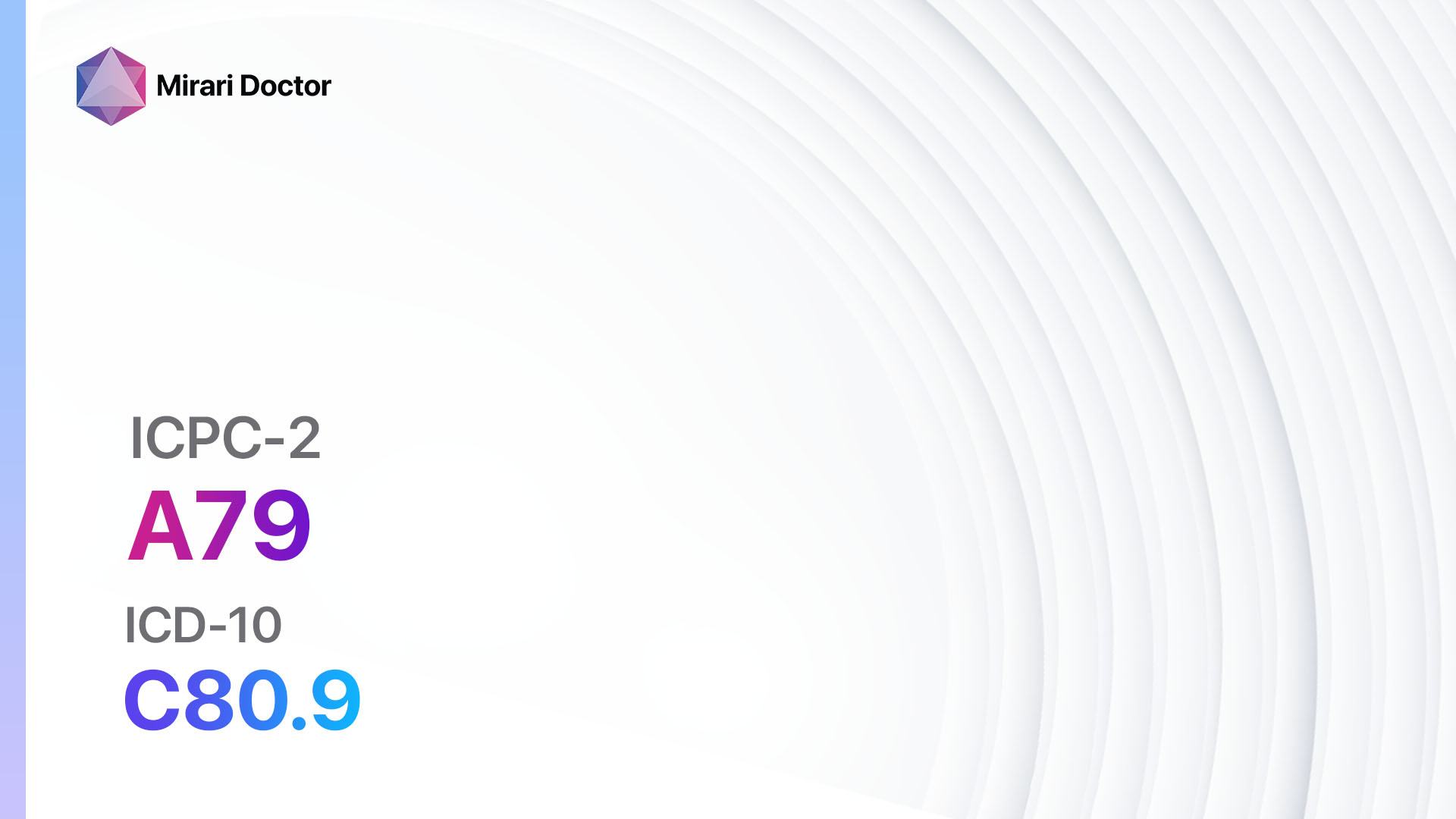
Introduction
Toxic effects from non-medicinal substances can occur due to exposure to various chemicals, toxins, or environmental hazards[1]. These substances can cause a range of symptoms and complications, and it is important to diagnose and manage these cases appropriately[2]. This guide aims to provide healthcare professionals with a comprehensive approach to diagnosing and managing toxic effects from non-medicinal substances.
Codes
- ICPC-2 Code: A86 Toxic effect non-medicinal substance[3]
- ICD-10 Code: T65.9 Toxic effect of unspecified substance[4]
Symptoms
- Nausea and vomiting: Patients may experience persistent nausea and vomiting, which can be severe in some cases[5].
- Abdominal pain: Patients may complain of abdominal pain, which can be localized or diffuse[5].
- Respiratory symptoms: Exposure to certain substances may lead to respiratory symptoms such as coughing, wheezing, or shortness of breath[5].
- Skin irritation: Skin contact with toxic substances can cause redness, itching, or rash[5].
- Neurological symptoms: Depending on the substance involved, patients may present with neurological symptoms such as confusion, dizziness, or seizures[5].
- Cardiovascular symptoms: Some toxic substances can affect the cardiovascular system, leading to symptoms such as chest pain or palpitations[5].
- Eye irritation: Exposure to certain substances can cause eye irritation, redness, or blurred vision[5].
- Gastrointestinal symptoms: Patients may experience diarrhea, constipation, or changes in bowel habits[5].
- Renal symptoms: Toxic substances can affect kidney function, leading to symptoms such as decreased urine output or swelling in the legs[5].
Causes
- Chemical exposure: Toxic effects can occur due to exposure to chemicals such as pesticides, solvents, heavy metals, or cleaning agents[6].
- Environmental hazards: Certain environmental hazards, such as mold, asbestos, or radiation, can lead to toxic effects[6].
- Food poisoning: Consumption of contaminated food or water can cause toxic effects[6].
- Drug abuse: Illicit drug use, including substances such as cocaine, methamphetamine, or opioids, can result in toxic effects[6].
- Occupational exposure: Some occupations involve exposure to toxic substances, which can lead to adverse health effects[6].
Diagnostic Steps
Medical History
- Gather information about the patient’s occupation, hobbies, and recent activities to identify potential sources of exposure[7].
- Ask about symptoms, their onset, and any factors that worsen or alleviate them[7].
- Inquire about any recent travel or exposure to environmental hazards[7].
- Assess the patient’s medical history, including any pre-existing conditions or allergies[7].
Physical Examination
- Perform a thorough physical examination, paying attention to any specific signs or findings indicative of toxic effects[8].
- Evaluate the patient’s vital signs, including blood pressure, heart rate, and respiratory rate[8].
- Inspect the skin for any rashes, redness, or signs of irritation[8].
- Auscultate the lungs for abnormal breath sounds[8].
- Examine the abdomen for tenderness or organ enlargement[8].
- Assess the neurological system for any abnormalities in coordination, reflexes, or mental status[8].
Laboratory Tests
- Complete blood count (CBC): To assess for any abnormalities, such as anemia or infection[9].
- Comprehensive metabolic panel (CMP): To evaluate kidney and liver function, electrolyte levels, and blood glucose[9].
- Urinalysis: To check for the presence of blood, protein, or other abnormalities[9].
- Toxicology screening: Depending on the suspected substance, specific toxicology screens may be ordered[9].
- Imaging studies: In some cases, imaging studies such as X-rays or CT scans may be necessary to assess for any organ damage or abnormalities[9].
Other Tests
- ECG: To evaluate cardiac function and rule out any abnormalities[10].
- Pulmonary function tests: If respiratory symptoms are present, pulmonary function tests may be performed to assess lung function[10].
- Allergy testing: If an allergic reaction is suspected, allergy testing may be conducted to identify the specific allergen[10].
Follow-up and Patient Education
- Provide appropriate treatment and management based on the diagnosis.
- Educate the patient about the potential sources of exposure and ways to prevent future toxic effects.
- Advise the patient on the importance of seeking medical attention if symptoms worsen or new symptoms develop.
- Schedule follow-up appointments to monitor the patient’s progress and ensure appropriate management.
Possible Interventions
Traditional Interventions
Medications:
Top 5 drugs for toxic effects from non-medicinal substances:
- Activated charcoal:
- Cost: $10-$30 per bottle.
- Contraindications: Patients with a compromised airway or gastrointestinal obstruction.
- Side effects: Nausea, vomiting, constipation.
- Severe side effects: Aspiration pneumonia.
- Drug interactions: May reduce the absorption of other medications.
- Warning: Should be administered within 1-2 hours of ingestion.
- Naloxone (for opioid toxicity):
- Cost: $20-$40 per dose.
- Contraindications: None.
- Side effects: Withdrawal symptoms, increased heart rate.
- Severe side effects: None reported.
- Drug interactions: None reported.
- Warning: Should be administered promptly in cases of suspected opioid overdose.
- Antidotes (e.g., N-acetylcysteine, flumazenil):
- Cost: Varies depending on the specific antidote.
- Contraindications: None for N-acetylcysteine. Flumazenil is contraindicated in patients with a history of seizures or benzodiazepine dependence.
- Side effects: Nausea, vomiting, allergic reactions.
- Severe side effects: Anaphylaxis (rare).
- Drug interactions: None reported for N-acetylcysteine. Flumazenil may precipitate withdrawal symptoms in patients dependent on benzodiazepines.
- Warning: Antidotes should be administered based on the specific toxic substance involved.
- Antiemetics (e.g., Ondansetron, Metoclopramide):
- Cost: $10-$30 per dose.
- Contraindications: Hypersensitivity to the medication.
- Side effects: Headache, constipation, dizziness.
- Severe side effects: None reported.
- Drug interactions: None reported.
- Warning: Use caution in patients with a history of prolonged QT interval.
- Bronchodilators (e.g., Albuterol, Ipratropium):
- Cost: $20-$50 per inhaler.
- Contraindications: Hypersensitivity to the medication.
- Side effects: Tremor, tachycardia, dry mouth.
- Severe side effects: None reported.
- Drug interactions: None reported.
- Warning: Use caution in patients with a history of cardiovascular disease.
Alternative Drugs:
- Flumazenil (for benzodiazepine toxicity): Cost: $50-$100 per dose.
- Physostigmine (for anticholinergic toxicity): Cost: $50-$100 per dose.
- Sodium bicarbonate (for acidosis): Cost: $10-$30 per vial.
- Glucagon (for beta-blocker or calcium channel blocker toxicity): Cost: $50-$100 per dose.
- Digoxin immune Fab (for digoxin toxicity): Cost: $500-$1000 per vial.
Surgical Procedures:
In some cases, surgical intervention may be necessary to remove or repair any damaged tissue or organs. The cost of surgical procedures can vary significantly depending on the specific procedure and the healthcare facility. It is important to consult with a surgeon to determine the appropriate surgical intervention and associated costs.
Alternative Interventions
- Activated charcoal: May help absorb toxins and reduce their absorption into the bloodstream. Cost: $10-$30 per bottle.
- Intravenous vitamin C: Some studies suggest that high-dose vitamin C may have antioxidant properties and help neutralize toxins. Cost: $50-$100 per infusion.
- Chelation therapy: Controversial treatment involving the administration of chelating agents to remove heavy metals from the body. Cost: $75-$150 per session.
- Hyperbaric oxygen therapy: Involves breathing pure oxygen in a pressurized chamber to increase oxygen delivery to tissues. Cost: $200-$300 per session.
- Herbal supplements: Some herbs, such as milk thistle or dandelion root, may have potential benefits for detoxification. Cost: Varies depending on the specific supplement.
Lifestyle Interventions
- Avoidance of toxic substances: Educate patients on ways to minimize exposure to toxic substances in their environment, such as wearing protective gear or using proper ventilation.
- Healthy diet: Encourage patients to maintain a healthy diet rich in antioxidants, vitamins, and minerals to support their body’s natural detoxification processes.
- Hydration: Adequate hydration can help flush out toxins from the body. Encourage patients to drink plenty of water.
- Regular exercise: Physical activity can promote circulation and help eliminate toxins through sweat and increased metabolism.
- Stress management: Chronic stress can impair the body’s detoxification processes. Encourage patients to engage in stress-reducing activities such as meditation or yoga.
It is important to note that the cost ranges provided are approximate and may vary depending on the location and availability of the interventions. Healthcare professionals should consult with local resources and consider individual patient factors when determining the most appropriate interventions for toxic effects from non-medicinal substances.
Mirari Cold Plasma Alternative Intervention
Understanding Mirari Cold Plasma
- Safe and Non-Invasive Treatment: Mirari Cold Plasma is a safe and non-invasive treatment option for various skin conditions. It does not require incisions, minimizing the risk of scarring, bleeding, or tissue damage.
- Efficient Extraction of Foreign Bodies: Mirari Cold Plasma facilitates the removal of foreign bodies from the skin by degrading and dissociating organic matter, allowing easier access and extraction.
- Pain Reduction and Comfort: Mirari Cold Plasma has a local analgesic effect, providing pain relief during the treatment, making it more comfortable for the patient.
- Reduced Risk of Infection: Mirari Cold Plasma has antimicrobial properties, effectively killing bacteria and reducing the risk of infection.
- Accelerated Healing and Minimal Scarring: Mirari Cold Plasma stimulates wound healing and tissue regeneration, reducing healing time and minimizing the formation of scars.
Mirari Cold Plasma Prescription
Video instructions for using Mirari Cold Plasma Device – A86 Toxic effect non-medicinal substance (ICD-10:T65.9)
| Mild | Moderate | Severe |
| Mode setting: 1 (Infection) Location: 0 (Localized) Morning: 15 minutes, Evening: 15 minutes | Mode setting: 1 (Infection) Location: 0 (Localized) Morning: 30 minutes, Lunch: 30 minutes, Evening: 30 minutes | Mode setting: 1 (Infection) Location: 0 (Localized) Morning: 30 minutes, Lunch: 30 minutes, Evening: 30 minutes |
| Mode setting: 2 (Wound Healing) Location: 3 (Kidney, Liver & Spleen) Morning: 15 minutes, Evening: 15 minutes | Mode setting: 2 (Wound Healing) Location: 3 (Kidney, Liver & Spleen) Morning: 30 minutes, Lunch: 30 minutes, Evening: 30 minutes | Mode setting: 2 (Wound Healing) Location: 3 (Kidney, Liver & Spleen) Morning: 30 minutes, Lunch: 30 minutes, Evening: 30 minutes |
| Mode setting: 7 (Immunotherapy) Location: 1 (Sacrum) Morning: 15 minutes, Evening: 15 minutes | Mode setting: 7 (Immunotherapy) Location: 1 (Sacrum) Morning: 30 minutes, Lunch: 30 minutes, Evening: 30 minutes | Mode setting: 7 (Immunotherapy) Location: 1 (Sacrum) Morning: 30 minutes, Lunch: 30 minutes, Evening: 30 minutes |
| Total Morning: 45 minutes approx. $7.50 USD, Evening: 45 minutes approx. $7.50 USD | Total Morning: 90 minutes approx. $15 USD, Lunch: 90 minutes approx. $15 USD, Evening: 90 minutes approx. $15 USD, | Total Morning: 90 minutes approx. $15 USD, Lunch: 90 minutes approx. $15 USD, Evening: 90 minutes approx. $15 USD, |
| Usual treatment for 7-60 days approx. $105 USD – $900 USD | Usual treatment for 6-8 weeks approx. $1,890USD – $2,520 USD | Usual treatment for 3-6 months approx. $4,050 USD – $8,100 USD |
 |
|
Use the Mirari Cold Plasma device to treat Toxic effect non-medicinal substance effectively.
WARNING: MIRARI COLD PLASMA IS DESIGNED FOR THE HUMAN BODY WITHOUT ANY ARTIFICIAL OR THIRD PARTY PRODUCTS. USE OF OTHER PRODUCTS IN COMBINATION WITH MIRARI COLD PLASMA MAY CAUSE UNPREDICTABLE EFFECTS, HARM OR INJURY. PLEASE CONSULT A MEDICAL PROFESSIONAL BEFORE COMBINING ANY OTHER PRODUCTS WITH USE OF MIRARI.
Step 1: Cleanse the Skin
- Start by cleaning the affected area of the skin with a gentle cleanser or mild soap and water. Gently pat the area dry with a clean towel.
Step 2: Prepare the Mirari Cold Plasma device
- Ensure that the Mirari Cold Plasma device is fully charged or has fresh batteries as per the manufacturer’s instructions. Make sure the device is clean and in good working condition.
- Switch on the Mirari device using the power button or by following the specific instructions provided with the device.
- Some Mirari devices may have adjustable settings for intensity or treatment duration. Follow the manufacturer’s instructions to select the appropriate settings based on your needs and the recommended guidelines.
Step 3: Apply the Device
- Place the Mirari device in direct contact with the affected area of the skin. Gently glide or hold the device over the skin surface, ensuring even coverage of the area experiencing.
- Slowly move the Mirari device in a circular motion or follow a specific pattern as indicated in the user manual. This helps ensure thorough treatment coverage.
Step 4: Monitor and Assess:
- Keep track of your progress and evaluate the effectiveness of the Mirari device in managing your Toxic effect non-medicinal substance. If you have any concerns or notice any adverse reactions, consult with your health care professional.
Note
This guide is for informational purposes only and should not replace the advice of a medical professional. Always consult with your healthcare provider or a qualified medical professional for personal advice, diagnosis, or treatment. Do not solely rely on the information presented here for decisions about your health. Use of this information is at your own risk. The authors of this guide, nor any associated entities or platforms, are not responsible for any potential adverse effects or outcomes based on the content.
Mirari Cold Plasma System Disclaimer
- Purpose: The Mirari Cold Plasma System is a Class 2 medical device designed for use by trained healthcare professionals. It is registered for use in Thailand and Vietnam. It is not intended for use outside of these locations.
- Informational Use: The content and information provided with the device are for educational and informational purposes only. They are not a substitute for professional medical advice or care.
- Variable Outcomes: While the device is approved for specific uses, individual outcomes can differ. We do not assert or guarantee specific medical outcomes.
- Consultation: Prior to utilizing the device or making decisions based on its content, it is essential to consult with a Certified Mirari Tele-Therapist and your medical healthcare provider regarding specific protocols.
- Liability: By using this device, users are acknowledging and accepting all potential risks. Neither the manufacturer nor the distributor will be held accountable for any adverse reactions, injuries, or damages stemming from its use.
- Geographical Availability: This device has received approval for designated purposes by the Thai and Vietnam FDA. As of now, outside of Thailand and Vietnam, the Mirari Cold Plasma System is not available for purchase or use.
References
- Mowry, J. B., Spyker, D. A., Brooks, D. E., McMillan, N., & Schauben, J. L. (2015). 2014 Annual Report of the American Association of Poison Control Centers’ National Poison Data System (NPDS): 32nd Annual Report. Clinical Toxicology, 53(10), 962-1147.
- Gummin, D. D., Mowry, J. B., Spyker, D. A., Brooks, D. E., Osterthaler, K. M., & Banner, W. (2018). 2017 Annual Report of the American Association of Poison Control Centers’ National Poison Data System (NPDS): 35th Annual Report. Clinical Toxicology, 56(12), 1213-1415.
- WONCA International Classification Committee. (1998). ICPC-2: International classification of primary care. Oxford University Press, USA.
- World Health Organization. (2015). International statistical classification of diseases and related health problems (10th ed.).
- Olson, K. R. (Ed.). (2012). Poisoning & drug overdose (6th ed.). McGraw-Hill.
- Hoffman, R. S., Howland, M. A., Lewin, N. A., Nelson, L. S., & Goldfrank, L. R. (Eds.). (2014). Goldfrank’s toxicologic emergencies (10th ed.). McGraw-Hill Education.
- Brent, J., Burkhart, K., Dargan, P., Hatten, B., Megarbane, B., Palmer, R., & White, J. (Eds.). (2013). Critical care toxicology: diagnosis and management of the critically poisoned patient. Springer Science & Business Media.
- Erickson, T. B., Thompson, T. M., & Lu, J. J. (2007). The approach to the patient with an unknown overdose. Emergency Medicine Clinics of North America, 25(2), 249-281.
- Osterloh, J. D. (2004). Laboratory testing in the treatment of poisoning. Primary Care: Clinics in Office Practice, 31(3), 653-673.
- Fischbach, F. T., & Dunning, M. B. (2015). A manual of laboratory and diagnostic tests (10th ed.). Wolters Kluwer.
Related articles
Made in USA



























